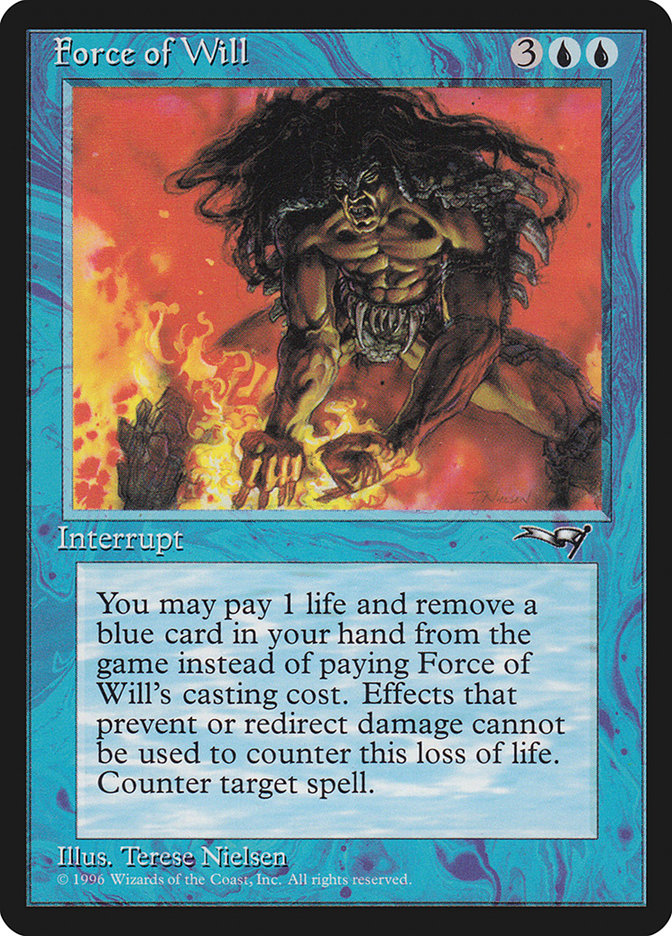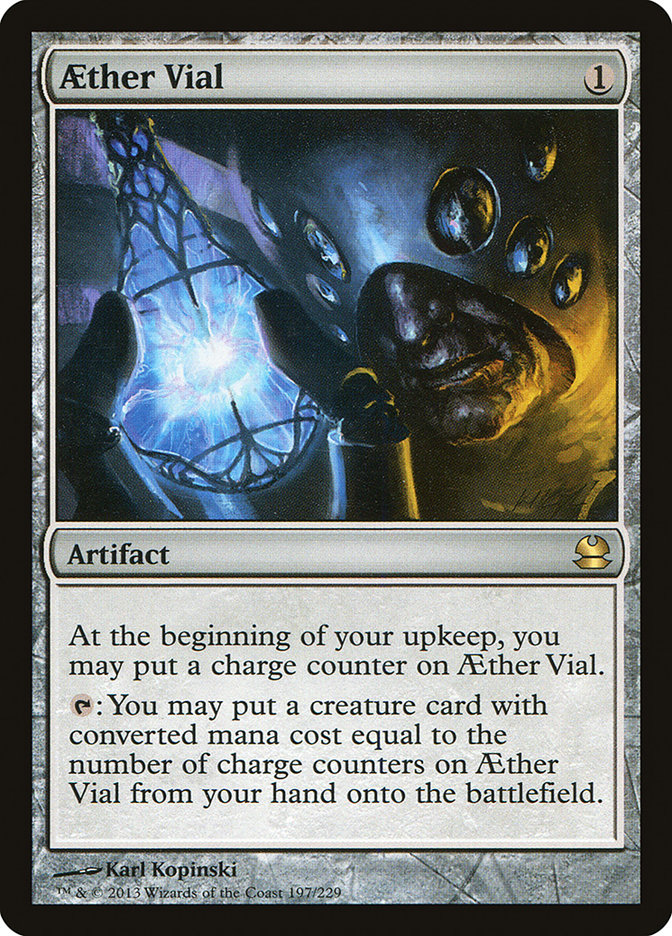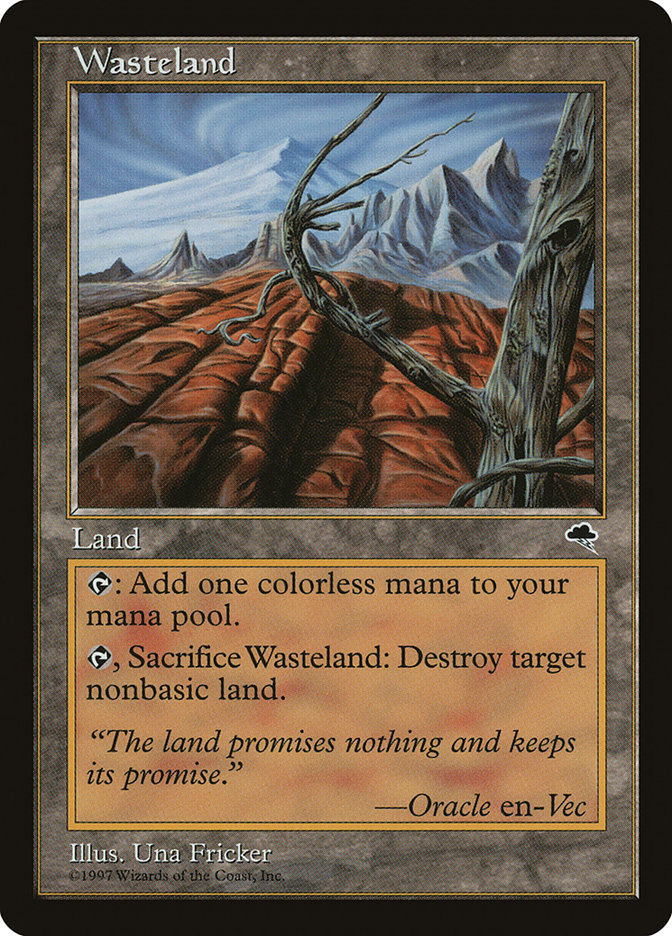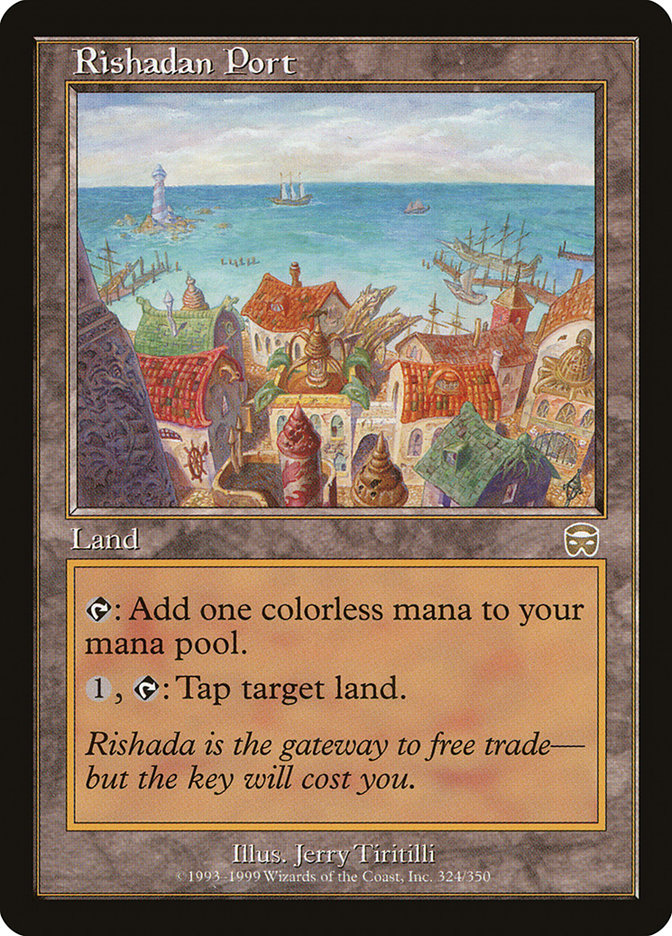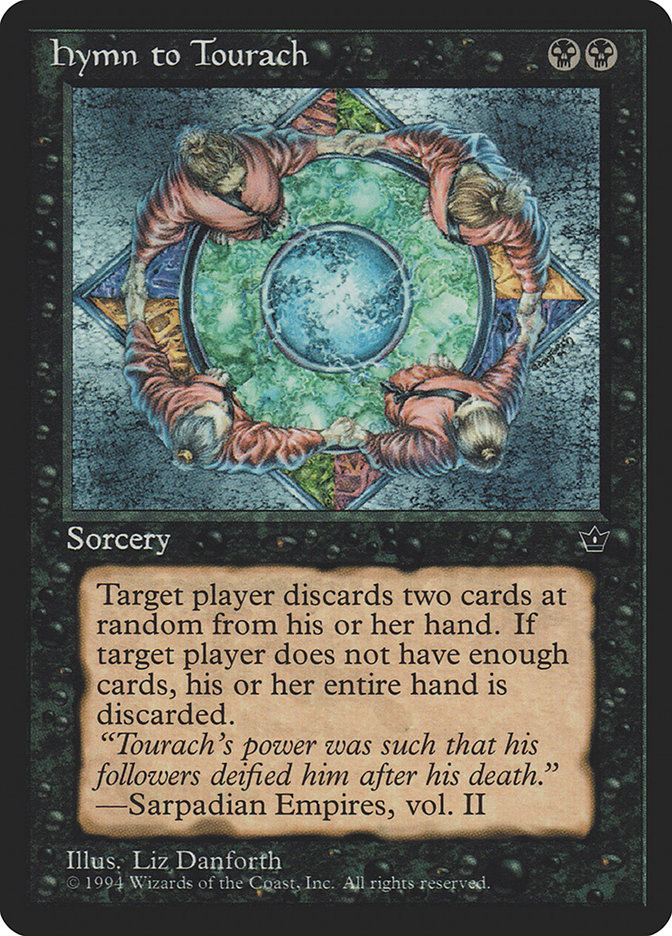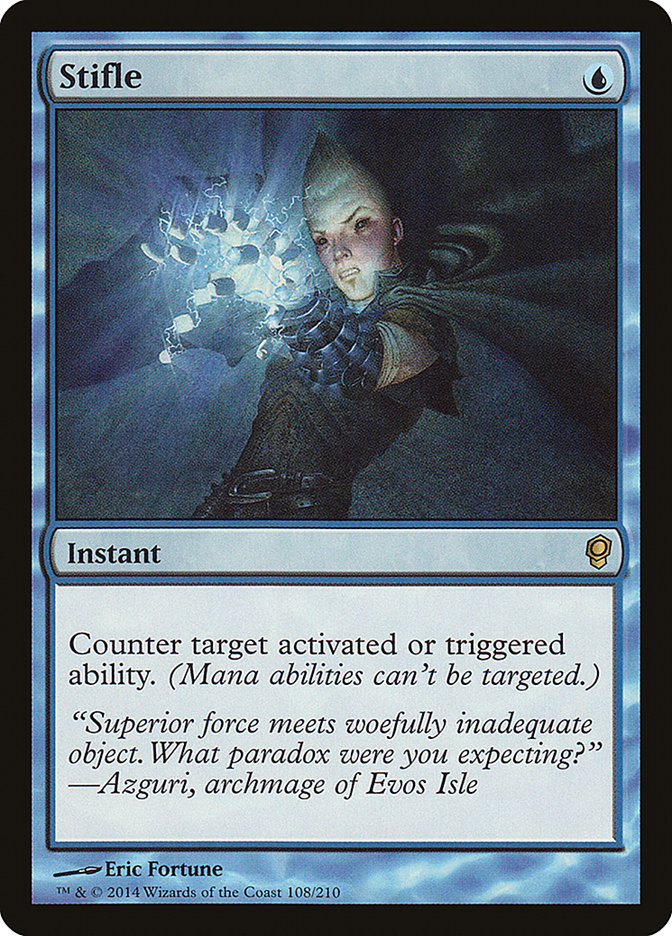Legacy: Magic’s greatest format. Or at least that’s one man’s humble opinion. The sheer power level of cards, potent protection spells, and wide selection
of viable archetypes makes Legacy a unique entity in Magic, giving you nearly unlimited control. Every base deck type in Legacy has a million different
iterations, which makes customization a huge draw to the format. If you are a brewer, then Legacy is the ultimate playground.
But there’s just one problem:
This is the best card in Legacy, and I don’t think anyone really wants to debate that. Alongside fetchlands, Brainstorm gives you access to a huge number
of cards in your deck every game. But more importantly, it helps keep you from getting mana flooded or mana screwed, making games last longer and
ultimately become more interesting. Brainstorm brings the format together unlike any other card in the history of the game.
And no one seems to mind that it is in nearly every single blue deck or that blue is the most played color.
It is an odd phenomenon to have a card like Brainstorm so clearly define a format, yet most of the Legacy community would riot if they ever banned it.
Brainstorm is what makes Legacy unique, because it gives so many decks the ability to be just a little bit better. Without Brainstorm, many archetypes just
wouldn’t exist. They couldn’t. Perhaps I’m wrong, and many of those decks would be just fine. A little worse, obviously, but still playable. Maybe
different decks would crop up and begin to flourish as a result of banning Brainstorm, but that isn’t a format I want to play. If I want a gigantic format
without access to Brainstorm, I’ll just play Modern.
There have been so many times where I’ve pronounced “If it doesn’t have Brainstorm, I’m not playing it.” While that is (mostly) true for me, many people
don’t think like me. It isn’t exactly fair to tell people that they have to play blue. And honestly, there are quite a few non-blue decks in Legacy that
are great options for any given tournament. And that’s the coolest part of Legacy! The format is so gigantic that no matter what color combination you
choose, you’ll be able to find powerful cards to fill out your deck. And given enough powerful cards, the need for Brainstorm is lessened. If you have a
lot of ways to use excess mana or function on very few lands, it isn’t as important to draw into more lands with Brainstorm, or shuffle away extra ones.
But at its core, Brainstorm isn’t actually raw card advantage. Very few people play spells that generate extra cards, instead looking to manipulate the
resources they would naturally draw in one way or another. Brainstorm is important in this regard, but there are many others at your disposal. How many of
these types of effects you play is dependent on what your plan is, or how your deck operates. Playing these types of cards usually leads to playing fewer
mana sources, which means you’ll be drawing spells more than lands when you cast something like Ponder or Brainstorm.
While this isn’t necessarily card advantage at its core, you are drawing a higher density of spells, which generally leads to winning games. Sometimes your
deck contains just a few cards that can help you out in a particular situation, and that is when Ponder and the like shine the brightest. Finding those
specific cards in high pressure situations is why deck manipulation is so powerful.
I’ve found that a lot of people who are new to Legacy aren’t exactly keen on how you’re supposed to cast Brainstorm effectively. The honest truth is that
the card is so complicated that I would estimate I make about one mistake every two Brainstorms cast. The point in the game in which you cast it matters a
lot, but the cards surrounding said Brainstorm matter too. If you have an active fetchland, you’ll have a “perfect Brainstorm,” as Cedric Phillips likes to
call it. You can shuffle away the two worst cards in your hand, and move on with your life. But what about when you want to keep all of the cards, or just
one of them? Finding the right line with Brainstorm isn’t just difficult, it is daunting, even for experienced players. I’ve cast Brainstorm thousands of
times, and I still have trouble finding mistakes until multiple turns have passed.
But I’m not trying to scare you away from Legacy. Drawing a Brainstorm in a tough board position gives you hope. New life. As long as you have the
resources to use it to the fullest extent, Brainstorm can effectively become Ancestral Recall. Turning useless cards into useful ones is often just as good
as a “draw 3.” Now, times have changed just a bit, but AJ Sacher wrote an entire article about the card Brainstorm a few years back. If you have time, give
it a read here.
I would be doing you a disservice if I didn’t mention Brainstorm’s tag team partner in Legacy:
This is, as they say, the glue that holds the format together. Without Force of Will in Legacy, combo decks would run rampant. Goblin Charbelcher can
consistently kill people on the first or second turn but will generally fold to a well-timed Force of Will. Without Force of Will in the format, there
would be chaos. This is one of the reasons why the Modern banned list needs to be constantly updated, as we don’t have a cards as powerful as Force of Will
to keep everything in check.
But I would also be leading you astray if I said Force of Will is a great card. It is a necessary evil, but it is pretty terrible in a vacuum. In a format
like Legacy that has very little card advantage, Force of Will is taxing on your resources. That extra card you’re pitching is generally going to be a
Ponder, Brainstorm, or some other blue card that could be useful down the line. It could even just be a blank card that you could have shuffled away with
Brainstorm, but the cost for greatness is high.
Those players that do play Force of Will, which there are many, understand how necessary Force of Will is against the combo decks of the format. And while
the cost is high, they are willing to pay. Having Force of Will in the format is like having an old-fashioned duel with your opponent. Without it in
Legacy, every battle would be nuclear war.
But it isn’t always clear what cards you should counter with Force of Will. It isn’t even clear when you should sideboard it out. Every deck has different
targets, and it is up to you to determine whether or not your deck can easily handle the threats being thrown at you. A threat as innocuous as Tarmogoyf
can wreak havoc on a Lightning Bolt deck, so keeping in your Force of Wills to counter them is pretty reasonable, albeit painful.
But enough about these two. Let’s take a look at some of the fair decks in Legacy you might encounter.
The “Fair” Decks
If you’ve listened to people talk about Legacy before, or even Modern, you’ve probably heard someone mention a “fair” deck. In essence, a fair deck is one
that isn’t trying to combo kill you. It generally plays creatures that attack and block, a bit of disruption so that they don’t die to combo themselves,
and some removal to handle opposing creatures. These types of decks are fairly popular in Legacy because people love the idea of interacting. Many of these
decks are blue and play Brainstorm, but there are quite a few that aren’t blue. Let’s take a look at a few and discuss how they operate, and how you can
plan to beat them.
Death and Taxes:
Creatures (26)
- 4 Mother of Runes
- 2 Mangara of Corondor
- 1 Aven Mindcensor
- 4 Flickerwisp
- 4 Stoneforge Mystic
- 2 Mirran Crusader
- 3 Phyrexian Revoker
- 4 Thalia, Guardian of Thraben
- 1 Brimaz, King of Oreskos
- 1 Containment Priest
Lands (23)
Spells (11)

Adrian Sullivan wrote an article about this deck a few months ago, and I like his list quite a bit. If you are a fan of this style of deck, feel free to
read up on the archetype here.
This deck relies on one card in particular to do a lot of the heavy lifting.
Vial is a card that doesn’t see a ton of play in Legacy, but it is a powerhouse in the decks that want it. While they’re busy sneaking creatures into play,
they’re generally attacking your mana with these:
Since they have a large source of mana every turn to play their creatures, they can afford to use Wasteland and Rishidan Port aggressively, keeping you
from trying to execute your gameplan. Disruptive creatures like Thalia, Guardian of Thraben slow down cantrips (Ponder, Brainstorm etc), but also provide
you with a nice bit of protection against combo decks. Their main weakness comes from being stopped from using Aether Vial with efficiency. If they’re
unable to play their disruptive creatures for free, the impact of Wasteland and Rishidan Port drop significantly.
Another major weakness in Death and Taxes is the low toughness of its creatures. Cards like Electrickery, Grim Lavamancer, Izzet Staticaster, and the hoser
Dread of Night can put a damper on their plans. If you have access to a type of card like this, keep it in mind, as Death and Taxes is a fairly popular
deck in Legacy. These cards (aside from Dread of Night) also have value against a lot of other matchups. Cheap creatures are a dime a dozen in Legacy, and
many of them have a low tolerance for punishment.
While Legacy offers a lot of ways to customize your favorite deck, it also gives you the tools to take a deck in a much different direction. Abzan
Deathblade features a few splashes to give you a bit more raw power, but it has a similar gameplan to Death and Taxes. The downside is losing Aether Vial,
but the upside is two extra colors full of possibilities. If you want better range with your threats, as well as more disruption with discard spells, you
can give this a try.
Creatures (17)
- 4 Dark Confidant
- 2 Tidehollow Sculler
- 3 Stoneforge Mystic
- 3 Thalia, Guardian of Thraben
- 4 Deathrite Shaman
- 1 Spirit of the Labyrinth
Planeswalkers (3)
Lands (21)
Spells (20)

Next up is the proverbial elephant in the room. Braiiiiinstorm!
Fair Blue Decks:
Let’s start with the one everyone hates the most.
The flavors of Delver are too numerous and time consuming to cover, so we’ll just go over the basics (and provide a few solid decklists). Delver is the
closest thing you’ll get to an aggressive strategy in Legacy at the moment. But at its core, Delver is much more of what is referred to as a tempo deck.
Their strategy is to play an early creature, and then use cheap or free spells to disrupt the opponent long enough for that threat (or a few future
threats) to win the game. This cheap disruption comes in many forms, but here are the basic cards to watch out for:
Different versions play different cards. As we discussed earlier, Legacy decks are highly customizable, and a lot of these kinds of disruption are similar
in what they’re trying to accomplish. Wasteland and Stifle help disrupt the opponent’s mana so that cards like Daze are more effective. Thoughtseize and
Hymn to Tourach put your opponent in a tough spot, as they are forced to play their spells into Daze more quickly than they would like. Otherwise, it could
be stripped from their hand before they can even cast it.
Delver decks are generally pretty good against combo decks, but they struggle against opposing creature-based decks that have access to a lot of mana
sources. The worse you make Daze, the better your chances of defeating them. A few years ago, Maverick was one of the better decks against Delver because
you played Green Sun’s Zenith (for Dryad Arbor) and Noble Hierarch as early mana sources. This allowed you to play around their cheap counterspells pretty
easily. You also had some threats that were tough for them to deal with, and cheap removal to take care of their threats. Since they aren’t playing that
many creatures to begin with, it isn’t all that crazy to assume one or two copies of Swords to Plowshares will stop them in their tracks.
Now, Death and Taxes has filled the role of Maverick, and instead of Noble Hierarch we have Aether Vial. Since the Delver decks all have access to better
removal thanks to the printing of Abrupt Decay and a few others, cards like Knight of the Reliquary are no longer game over (as their primary removal was
Lightning Bolt). As the enemy adapts, so must we.
There are some combo decks that are fast and resilient enough to punish Delver, but a well-built Delver deck should be able to dismantle just about any
combo deck so long as you have a reasonable draw. You can thank Ponder and Brainstorm for that level of consistency.
Creatures (12)
Lands (18)
Spells (30)

Creatures (16)
Lands (18)
Spells (26)

While Delver is the king of tempo in the current Legacy format, it isn’t the only deck that plays a mean creature-based game. Stoneforge Mystic is also
pretty great in a deck with Brainstorm (who knew?). But like most decks in Legacy, we have a lot of options on how we want to build it. But these two cards
are quite the pair.
Alongside the game’s most powerful equipment, Umezawa’s Jitte and Batterskull, True-Name Nemesis is truly a force to be reckoned with. There aren’t a lot
of ways for your opponent to kill it once it hits play, and they certainly can’t block it.
But do we play black for discard spells, Liliana of the Veil, and other goodies? Or is Lightning Bolt too powerful to leave on the sidelines? With Dig
Through Time seeing more play, having access to Pyroblast is definitely worthwhile. As Lightning Bolt is clearly the most diverse removal spell ever
printed–it can go straight to the opponent’s dome when removal would normally be dead–it is possible that red is more appealing than black. Also, we
already have a place to start.
Creatures (10)
Planeswalkers (2)
Lands (22)
Spells (26)

This deck is weak to combo strategies in the first game, but it can usually shore that up in the next two games. Having a ton of cheap removal is bad for
business against combo, but great against creature-based decks. Stoneforge Mystic and True-Name Nemesis are also pretty clunky against decks that are
trying to kill you within the first four turns. You might be able to catch them off guard with a timely counterspell or Force of Will, but they will have
plenty of time to recover before you kill them.
Next up, a new take on something we’ve all been dreaming of. Or at least I have.
Creatures (9)
Planeswalkers (2)
Lands (18)
Spells (31)

I don’t know Jason Smith, but I think we may be cut from the same cloth. I love the combination of Cabal Therapy and Young Pyromancer, but I also think Dig
Through Time is criminally underplayed in Legacy. With Treasure Cruise getting the axe a few months ago, I thought Dig Through Time would just replace it
in many strategies, but they are completely different cards that are trying to accomplish different things. Dig Through Time seems perfectly built for a
control deck, or potentially, a slower combo deck. But when you start to add velocity with Young Pyromancer, as well as other graveyard related items like
Cabal Therapy, you’re starting to build a monster of a control deck.
On paper, this deck looks like a Delver deck that someone forgot to put Delver of Secrets in. It’s even playing eighteen lands, after all. But at its
heart, this is a control deck. It plays a lot of removal and counterspells and even has a strong card advantage element to it. Baleful Strix and Snapcaster
Mage can do some work against creature-based strategies, while many of your other spells are phenomenal against combo. This deck seems to have it all!
However, what may seem great on paper might be awkward in practice. I think that it is very likely that this deck is weak to Wasteland, as well as other
forms of mana denial. Unlike Delver decks, we can’t leverage one-land draws very well. We’re occasionally forced to spend our first few turns digging for
lands, falling too far behind. It shouldn’t be too difficult to shore up this weakness, but figuring out what card(s) to cut is going to be tough.
There is one more deck, similar to the ones above, that is trying to kill and counter just about everything the opponent is doing.
Creatures (13)
Planeswalkers (4)
Lands (22)
Spells (21)

While the cards vary wildly between these four archetypes, they all have the same things in common. The difference is specificity, but the theory behind
each one is the same. Put a clock on the opponent while you grind them out. Delver decks do it a little bit faster and with a bit more finesse, but you
have to think of them as four different gears in the same car. They are all capable of switching into the other three gears given the right situation, but
they start at different places. Keep that in mind when figuring out your role in the games against them.
Miracles/Control
Miracles is another deck that has been cropping up a lot lately. The powerful synergy between Sensei’s Divining Top and Counterbalance can punish a lot of
decks that are built to utilize a low curve. Delver decks and many combo decks in Legacy fall into this category, and they get demolished when the Miracles
player assembles this one-two punch.
Creatures (6)
Planeswalkers (3)
Lands (22)
Spells (29)

There are a lot of ways to build Miracles, but Joe Lossett is your best bet for keeping up with all the various permutations. He tends to stream a lot with
the deck and has an incredibly high win percentage with it.
The strength of Miracles lies almost solely with Sensei’s Divining Top since it helps to keep draws smooth, as well as fueling Terminus and Entreat the
Angels. Without Sensei’s Divining Top, many of Miracles draws can be clunky, though they have enough defense with removal and counterspells to eventually
find one.
The weakness of Miracles lies in your ability to make Counterbalance a mediocre card. If you can do that by having a wide range of casting costs above
three, then you can ruin a major part of their gameplan. Killing either Sensei’s Divining Top or Counterbalance is a great way to make sure you can resolve
your spells, but it might be difficult. After all, they will have Force of Will at the ready.
If you can make Jace, the Mind Sculptor a bit weaker, then you’re also probably in good shape. Decks that put a lot of pressure on Jace make him much worse
and make Miracles worse as a result. Jace is an important part of their plan, as it acts as their card advantage engine while they try to pull ahead. If
they are just floundering with a Sensei’s Divining Top, you could potentially overwhelm their resources.
Brian Braun-Duin has also played a lot of Miracles over the last few years, and his version is a bit different.
Creatures (2)
Planeswalkers (3)
Lands (21)
Spells (34)
- 4 Sensei's Divining Top
- 4 Brainstorm
- 1 Counterspell
- 4 Force of Will
- 4 Swords to Plowshares
- 4 Counterbalance
- 4 Ponder
- 2 Entreat the Angels
- 4 Terminus
- 1 Council's Judgment
- 2 Dig Through Time
Sideboard

Fewer creatures and loading up on Ponder to reduce the land count make this deck feel a bit more powerful, though it is much more difficult to actually win
the game. If you like control strategies, either of these versions of Miracles would be a great choice.
If you are looking for something a bit different in your control deck, might I suggest giving this beauty a look?
That’s all for this week. Next week we’ll feature the major combo decks in the format and try to give as many as possible their due. I’m not going to lie,
Legacy can seem a bit…daunting. There are a lot of things you want to know and learn about each and every deck. Figuring out what your opponent is
playing within the first few turns is key when trying to resolve stuff like Brainstorm or some sort of tutor effect. If you make a mistake based on a lack
of knowledge in the format, it may haunt you.
I think that the archetypes listed above are a pretty reasonable example of the fair Legacy decks, but I obviously skipped over a few. There are just too
many variations to list, and many of those variations are weak to similar cards/decks.
I’ll try to be a bit more on the broad strokes side next week when it comes to the combo decks. Hopefully this article gives you the push you need to give
Legacy a try in Worcester next weekend. I am going to be there, and it should be a lot of fun. After all, the only people who don’t have fun in Legacy are
the ones who play with/against Lands and Dredge.


